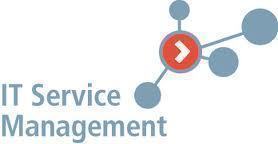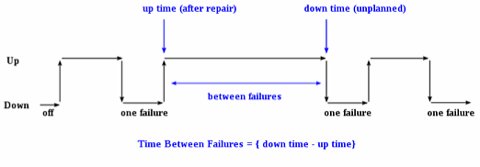Most businesses and organizations rely on their documents to store data and keep information readily available. Some corporations create millions of documents each year. Filing data that is collected, storing it safely, indexing it properly, making it easily accessible and protecting it from outsiders is a major concern for many organizations.
In order for you to implement a document management system at your organization, you must first take into consideration the following aspects of document management. They include: storage, retrieval, filing, security, archival, retention, distribution, workflow, and creation. Here is a look at each one of these aspects.
Storing Documents: You might not think it is a big deal to store a few hundred documents, however, it is very important to imagine about the magnitude of large corporations, which can create millions of documents each year, and on a regular basis.
Not only are these documents usually spread out over many offices throughout the country, they can be in different parts of the world as well. Document storage is an important piece to document management, due to the fact that in the near future, a document might need to be found for legal or other business purposes. Most large corporations store documents in two ways; they either digitize all their documents and then store all documents in a large database or they rent or buy storage space where these documents are held for a number years (usually stated by the state or government law) before they can be destroyed. Most corporations and large organizations do both, they digitize their documents and place them in storage until they are no longer needed.
Retrieving Documents: Retrieving documents is another huge problem that many people involved in document management must solve. How do you access one specific document in a pile of thousands or even millions of documents? Retrieving documents requires a system of storing documents and accessing these documents in a timely manner, as well as a monetary affordable manner.
Filing: Filing is extremely important, even if you have an organization system set up, who is to say that a file can’t be easily misplaced. It is important to have a system that is not only easy to use, but is effective even if documents are misplaced. Some of today’s documents have stickers that include transponders. These transponders allow filing assistants to easily locate a file via RF (radio frequency technology). For important files, more and more corporations are using this technology.
Security: Security for most organizations is crucial when it comes to their document management. Many corporate industrial secrets, planning, salary data and other types of information are stored on documents. Whether the document is only a few weeks old or a few years old, if someone that is not authorized to look and copy these documents gets a hold of them, it can cause the organization possibly millions of dollars in damages. Today, lots of security precautions are set up around document management. For instance, regarding digital document storage, most documents are stored on servers that are not accessible by the internet, only the intranet (the organizations computers only). Most digital documents are also encrypted and password protected so that it can take lots of hard work just to decrypt one document.
Security is also a major concern for documents that are stored physically. If a document storage facility is not secured properly, a person can easily walk out with a whole filing cabinet of documents or worse. Most document storage facilities are guarded by security professionals.
Archival: One of the interesting aspects of archiving documents is how people will be able to access documents in the future, let’s say 50 to 100 years from now. Look back 30 years and many people were using 5¼ inch floppies or other types of data with specific computer languages. One part of archiving documents is to make sure there is a compatible way to access the data quickly and effectively.
Retention: Retention refers to holding documents for a specific period of time. While state and government laws usually dictate the length of time for some documents such as tax receipts, human resource documents, etc, other documents that are important might be prematurely destroyed. Retention considers how to make sure documents that are still important are held separately from others so that they survive the yearly purges.
Distribution: Just like any other type of data or commodity, how do you get the documents that have been created into the hands of people that need them? For instance, it is fine for a human resources assistant to create a document on a termination, but if a lawyer needs that document 2 years later, how will the document be distributed. Usually if the documents are digitally scanned, a document can be pulled up from the digital archives via a password or work request, however if it stored in its original paper form, there has to be some kind of plan in place to find the document and effectively deliver it to the person that requires it.
Workflow: Workflow is the process of how a document moves within an organization. For instance, let’s say a budget has been created; there must be a workflow plan in place to help facilitate the documents distribution from the creator to managers, to the executives in charge of finances.
Creation: It is important to consider how documents are created. A document may be created by one person, by a team of people or an entire department. This is also part of document management, and there must be organization and structure to help this process be effective.
Document management takes all of the above topics into account. Whether you are a sole proprietor, work in a small business or for a large organization, Document management is extremely important and can help your organization with information flow.
Document Management Systems
In the information age, the process of input, delivery, storage, receipt, and categorization of data is critical. Companies, government entities, and individuals have to rely more and more on automated, reliable solutions in order to keep their information safe and readily accessible.
A document management system (DMS) is an integrated network of compatible programs or computer systems that reliably handle information for accurate records and usability. As more data is created and shared on a daily basis there is a great demand on keeping it secure and available.
Document management systems can vary in size and complexity from large systems used by government agencies and Fortune 500 companies to the relatively small applications used by individuals. Some of the most popular and efficient companies that offer document management system solutions are Microsoft, Hewlett-Packard, and Laserfiche.
Document management systems are typically able to transform and parcel data in such a manner that meets the needs of the user. For instance, a user may call on data to be implemented in an email application, to construct a spreadsheet, to generate reports, or to be published on a website. Associated software that comprise the document management system enables the information that is called upon to be formatted correctly for the user’s chosen application.
Document management systems are also commonly called content management systems (CMS), though CMS are typically associated solely with World Wide Web publishing applications. There are web-based content management system solutions available that vary a great deal on their strength, available functions, and application. However, usually the most robust and comprehensive CMS applications require software to be uploaded onto the user’s computer.
Web-based commerce relies heavily on accurate and powerful content and document management for customer security, accurate product ordering, and reliable inventory control. Additionally, web publishing companies and individuals rely heavily on content and document management system solutions to increase productivity by reducing the redundant and mundane tasks of sorting through reams of collected and generated data.
Document management systems are critical in the information age for a variety of user applications. There are many varieties of management solutions available, depending on the needs of the user. Content and document management system solutions will increase in sophistication and security ability as more critical information is generated and shared on a daily basis. Just as the modern world depends more heavily on the World Wide Web, governments, companies, and individuals will rely on accurate, safe, and usable content and document management systems to handle their increasing data loads.




lydaspeer
Great article. I really believe that digitizing the documents are really helpful to reduce the work load a lot. I have read a lot of case studies done by Ash Conversions in Toronto. But for important documents like legal paper we have to make sure that there is a hard copy as well. You can never trust computers that much.